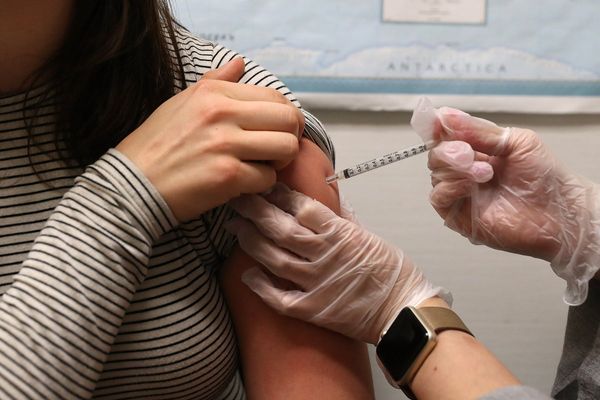A MAJOR new exhibition is drawing on the artist’s experience as an asylum seeker in Scotland.
At its core lies the story of Aqsa Arif’s arrival in the UK from Pakistan with her family.
Initially placed in a high-rise council flat on Glasgow’s Southside, they were moved years later for the production of Sony Bravia’s 2006 Paint advert, which saw 70,000 litres of coloured paint explode in and over her childhood council flat. With a reported budget of £2 million, the advert resulted in the mostly working-class residents, refugees and asylum seekers being displaced and rehoused in other Glasgow high-rises.
Arif told the Sunday National that being moved for the advert was the first time she truly sensed that her family had no control over where they lived, or what they could call home.
“There was a deep sense of being othered, of being displaced not for our benefit, but for something commercial, something glossy,” she said. “It made us feel invisible, as though we were pieces to be moved around rather than people with needs, attachments, and roots. That experience has stayed with me, shaping how I think about belonging, visibility, and the politics of space.”
Arif’s new solo exhibition uses South Asian folklore to explore themes of displacement and assimilation.
“Moving to the UK was a significant shift for my family, one that to this day, remains largely unspoken,” she said.
“Perhaps out of trauma or necessity, there’s been a strong emphasis on looking forward rather than dwelling on the past. I was five when we were placed by the Home Office in a high-rise flat in Scotland. At that age, I didn’t have the language to understand the situation fully but I understood I had to adapt. I found myself in a predominantly white area where sectarianism, gang violence, and racism were very present realities.”
Arif said there was a noticeable generational divide in how the family navigated this new and often hostile environment.
“My mother, like many others, wanted to hold onto her culture, seeking familiarity and belonging in a place that made it clear we didn’t quite fit in,” she said.
“For me, starting school meant learning quickly how to blend in and how to be accepted. At five years old, the question of which football team I supported (Celtic or Rangers) became more influential in forming friendships than the colour of my skin. But beneath those small negotiations was a larger pressure to assimilate and lose my heritage.”
This generational tension between preservation and adaptation forms the emotional core of the exhibition. Arif said it had shaped the mother-daughter dynamic that runs through the work, reflecting not just the individual responses to displacement but also the silence and resilience that have come to define much of that shared experience.
Displacement is one of the most pressing issues of our time, she believes.
“It’s only intensifying,” she said. “From the ongoing genocide in Palestine to the escalating impacts of the climate crisis, more and more people are being forced to leave their homes.
“In Raindrops Of Rani, I use the metaphor of a flood to explore this reality drawing on the colonial legacy of dams in Pakistan, which continue to cause devastation, particularly as climate change worsens.”
Arif said that storytelling had the power to create connection and empathy.
“I hope that through the work, people see the complexity, grief, and resilience behind these experiences and resist the growing apathy that surrounds us,” she said.
Raindrops Of Rani draws on the folk tragedy Heer Ranjha a well-known South Asian folktale, as a way of creating space for emotion, memory, and imagination without the constraints of hard facts.
“Through this lens, I could explore the fear of not fitting in, the shifting perceptions of my mother and the loneliness of being a child trying to adapt,” said Arif.
“Fantasy gives me a realm where audiences can connect through empathy rather than instruction. It’s not about being didactic but about inviting people to sit with the relationships, emotions, and dynamics that might resonate with their own experiences, especially through the archetypes and symbols rooted in South Asian storytelling. Folklore, in my practice, is a bridge between personal and collective memory.”
Aqsa Arif: Raindrops Of Rani runs until November 2. It is one of two exhibitions Edinburgh Printmakers are showcasing as part of the 2025 Edinburgh Art Festival which runs until August 24







